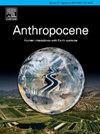伊朗西部扎格罗斯地区过去和未来的气候变化
IF 3.3
2区 地球科学
Q2 ENVIRONMENTAL SCIENCES
引用次数: 0
摘要
伊朗西部扎格罗斯森林的减少被认为是气候变化的结果。气候变化的影响超出了环境范畴,影响了扎格罗斯地区人民的生活水平、经济、社会和文化发展。本研究旨在分析1988 - 2022年扎格罗斯地区16个天气气象站观测数据的趋势,并评估共享社会经济路径(ssp)情景下的未来气候变化。采用Mann-Kendall (MK)检验和Sen's斜率估计来检测气象数据集的显著趋势。利用分位数映射方法,将NorESM2-LM模式在SSP1、SSP3和SSP5情景下的预估气象变量从2030年缩小到2060年。1988—2022年,气温(75 %)和风速(56 %)显著升高(α=0.05),但降水变化趋势不显著。自1988年以来,观测到温度(0.04°C y−1)和风速(0.02 m s−1 y−1)均有所增加。与历史时期相比,预计SSP1、SSP3和SSP5情景下的年平均气温在2030 - 2060年间将分别升高0.2°C、0.4°C和1.2°C。然而,我们在所有情景下的预测表明,扎格罗斯地区年平均降水量的增加可以忽略不计。本研究结果表明,在所有情景下,扎格罗斯地区都将容易受到干旱的影响,从而对水资源、扎格罗斯森林、农业和相关的社会经济活动产生重大影响。本文章由计算机程序翻译,如有差异,请以英文原文为准。
Past and future climate change in the Zagros region of western Iran
The decline of Zagros forests of western Iran is assumed to be a consequence of climate change. The impact of climate change extends beyond the environment and has affected living standards, the economy, society, and the cultural development of people in the Zagros region. This study aimed to analyze trends in the meteorological data obtained from observations at 16 synoptic weather stations in the Zagros region between1988 and 2022 and assessed future climate change under shared socio-economic pathways (SSPs) scenarios. The Mann-Kendall (MK) test and Sen's slope estimator were applied to detect significant trends in meteorological datasets. Projected meteorological variables of the NorESM2-LM model under SSP1, SSP3, and SSP5 scenarios were downscaled from 2030 to 2060 for each station using a quantile mapping approach. From 1988–2022, annual air temperature (75 % of stations) and wind speed (56 % of stations) significantly increased (α=0.05), but there were no significant trends in precipitation for any of the stations. Since 1988, an increase was observed in both temperature (0.04 °C y−1) and wind speed (0.02 m s−1 y−1). Compared to the historical period, the mean annual temperature is expected to increase under SSP1, SSP3, and SSP5 scenarios by 0.2°C, 0.4°C, and 1.2°C, respectively, between 2030 and 2060. However, our projections under all scenarios suggest a negligible increase in average annual precipitation in the Zagros region. The results of this research suggest that the Zagros region will be vulnerable to drought under all scenarios, leading to substantial impacts on water resources, Zagros forests, agriculture, and related socio-economic activities.
求助全文
通过发布文献求助,成功后即可免费获取论文全文。
去求助
来源期刊

Anthropocene
Earth and Planetary Sciences-Earth and Planetary Sciences (miscellaneous)
CiteScore
6.30
自引率
0.00%
发文量
27
审稿时长
102 days
期刊介绍:
Anthropocene is an interdisciplinary journal that publishes peer-reviewed works addressing the nature, scale, and extent of interactions that people have with Earth processes and systems. The scope of the journal includes the significance of human activities in altering Earth’s landscapes, oceans, the atmosphere, cryosphere, and ecosystems over a range of time and space scales - from global phenomena over geologic eras to single isolated events - including the linkages, couplings, and feedbacks among physical, chemical, and biological components of Earth systems. The journal also addresses how such alterations can have profound effects on, and implications for, human society. As the scale and pace of human interactions with Earth systems have intensified in recent decades, understanding human-induced alterations in the past and present is critical to our ability to anticipate, mitigate, and adapt to changes in the future. The journal aims to provide a venue to focus research findings, discussions, and debates toward advancing predictive understanding of human interactions with Earth systems - one of the grand challenges of our time.
 求助内容:
求助内容: 应助结果提醒方式:
应助结果提醒方式:


